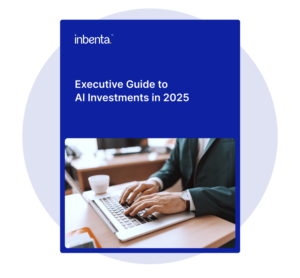In artificial intelligence, Lexicons help map words to meaning so that chat solutions can understand the context and intent of users’ queries and can display true language comprehension.
Artificial intelligence is becoming integral to how businesses operate. And integral to AI is the concept of a Lexicon, which is key to how these technologies interpret language.
A Lexicon, in the context of AI and Natural Language Processing (NLP), is a vast repository of concepts and semantic relationships between words. It’s essentially a sophisticated dictionary that helps AI systems grasp the nuances of human language. Unlike simple keyword matching, Lexicons allow the AI to understand the user’s intent and the context of their query. Interactions become more natural and accurate.
Neuro-Symbolic AI takes this capability further by combining symbolic reasoning with machine learning. Computational linguists also add depth to the Lexicon’s capacity, so that as interactions accumulate, the AI’s understanding continuously improves. This creates a system that not only understands queries from day one but also gets smarter with each user interaction, refining its knowledge base and delivering ever more precise answers.
Put AI to work for your customer service.
What are the key elements of an efficient Lexicon?
Weaving together Neuro-Symbolic AI with machine learning takes a sophisticated and layered structure. This marriage allows systems to break down words into symbols, analyzing them for context and insight. It’s this interplay that helps Lexicon-powered systems deliver logical and context-sensitive responses.
For example, Inbenta’s Lexicon comprises three distinct layers:
- Base Layer: This foundation contains universal language knowledge gathered from billions of interactions over time.
- Industry Layer: Also known as the Domain Layer, it incorporates industry-specific terminology.
- Client Layer: Customized for each customer, this layer fine-tunes the AI’s understanding based on the company’s unique data and voice.
Applications and benefits of integrating a Lexicon
In practical terms, integrating a Lexicon means that businesses can offer smarter AI solutions that address inquiries based on meaning, not just keywords. For instance, a bank employing a Lexicon-enhanced AI might reduce the risks associated with misunderstanding regulations or compliance issues, as the AI can interpret nuanced customer inquiries more accurately.
When coupled with a comprehensive knowledge base — the AI’s information repository — the Lexicon can help users find accurate information seamlessly. This can significantly streamline customer support, resolving common inquiries rapidly and accurately and easing the load on human support teams.
In brief:
- Lexicons in AI are sophisticated repositories of concepts and semantic relationships that help AI systems understand language nuances beyond simple keyword matching.
- A three-layer lexical structure (Base, Industry, and Client) allows AI to navigate language complexities with precision in customer service.
- Lexicons significantly improve AI’s ability to understand context and intent in customer queries for more accurate and relevant responses.











